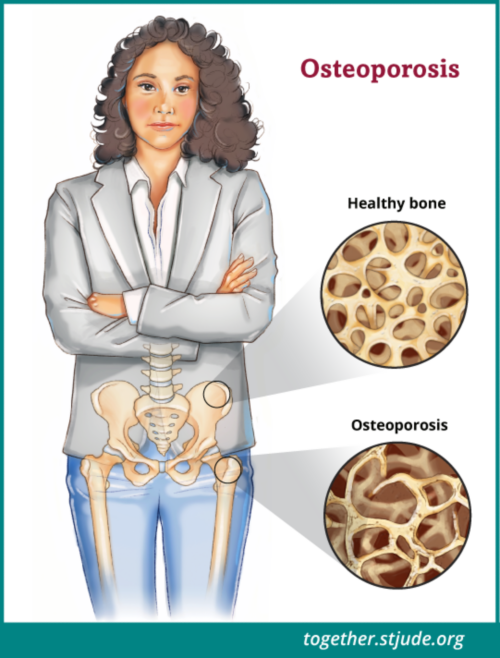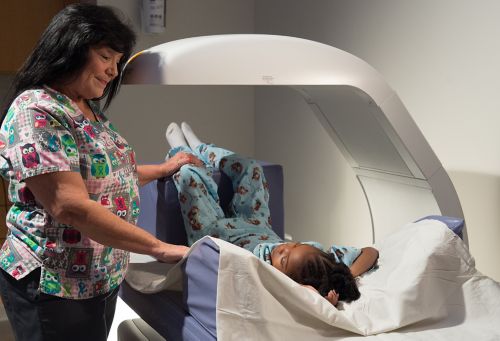A bone mineral density test measures bone mass. Bone mineral density refers to the amount of calcium and other minerals in bone. The most used bone mineral density test is DEXA or DXA. DEXA stands for dual energy x-ray absorptiometry. The DEXA test uses x-rays to measure bone mass.
Some treatments for pediatric cancer can cause loss of bone mass. In addition, conditions such as sickle cell disease affect bone health and bone mass. This can later result in osteoporosis.
Children who are at risk of bone mass loss include those who:
- Have a condition that can weaken the bones, such as sickle cell disease.
- Take medicine that can weaken bones, such as certain cancer treatments.
- Are getting treatment for bone problems.
A DEXA scan can show bone density and strength. It can also show if treatment for bone problems is working.
Children at risk for developing osteoporosis should have a DEXA scan when they enter long-term follow-up care.
How to prepare for your child's DEXA scan
Medical and treatment history
You will likely be asked to answer questions about your child’s bone health history and medical treatments.
Important things to tell your care team
- Tell your team if your child recently had an exam or scan with barium or contrast liquid. If the answer is yes, the DEXA scan may be rescheduled.
- Tell your team if there is a chance your teen could be pregnant. If so, the test could hurt the baby.
- Tell your team if your child has a metal prosthesis, spinal rods, or other metal objects. If they do, they may need to do a different kind of test.
Stop calcium supplements
Those who take medicines with calcium or calcium supplements such as daily vitamins should stop taking them at least 24 hours before the scan.
Wear comfortable clothes
Make sure your child wears loose, comfortable clothes with no metal snaps or zippers. Metal shows up on bone density tests.
Do not wear these items:
- Watches
- Jewelry
- Hair clips with metal
- Glasses
- Dental retainers with metal in them
Your child might wear a hospital gown during the scan.
Lie still during the scan
A DEXA scan takes about 45 minutes. Your child must remain still, or the X-rays will be blurry. It might help if they pretend to sleep or be a statue.
In rare cases, children may need medicine to help them lie still. In the case of infants, the staff might ask parents to feed them right before the exam.
Safety of DEXA scans
A DEXA scan uses much less radiation than a regular X-ray. Discuss any concerns with your medical team.
Staying with your child during the scan
You can usually stay with your child during the scan. But if you are pregnant, you must remain in the waiting room.
A staff member will be nearby operating the machine.
Results of the scan
A radiologist, a physician trained to interpret imaging tests, will analyze the results. They will send a report to your child’s doctor. It can take up to several days to get DEXA scan results. Ask the doctor when to expect them.
A DEXA scan produces two measurements. One is called a Z-score. This score shows how much bone mass your child has compared to other people of the same age, size, and gender. If this score is higher or lower than usual, your child may need more tests.
The other score is called a T-score. This score shows the risk of your child breaking a bone.
—
Reviewed: September 2022


